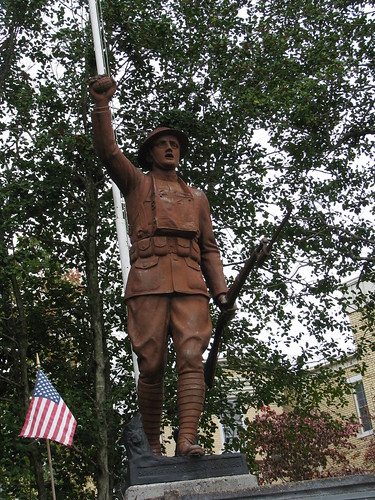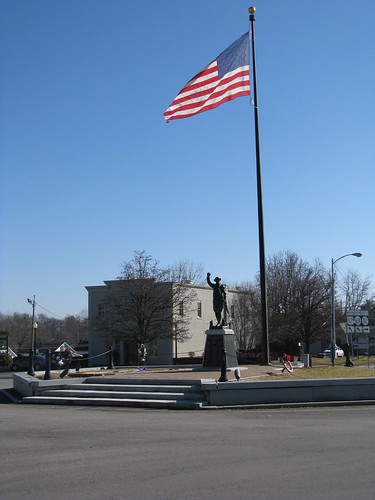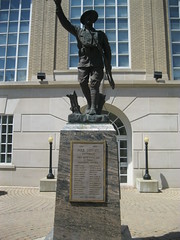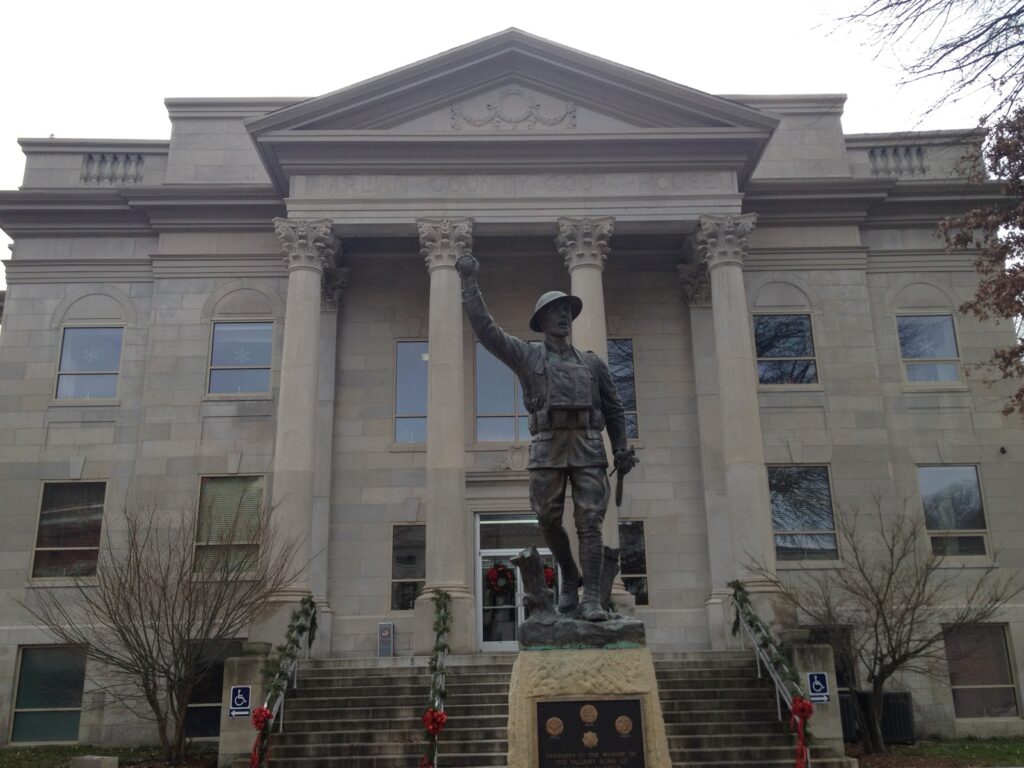 |
| WWI Doughboy Statue at the Harlan County Courthouse – Harlan, Ky. |
A lot of areas in Kentucky can be described as being remote. But Harlan County is about the most remote county in the state. Its located in the far southeastern corner of the state, high up in the mountains. Driving into Harlan, you immediately notice the tall flood wall along the Martin’s Fork River, which was constructed back in the 1990s in response to flooding problems back in the late 1970s.
This beautiful courthouse sits in the center of town, which is surprisingly large. Based on historic population figures, Harlan County now has less than a third of the population that it had back in the 1930s. This large and beautiful courthouse was built during this boom time in Harlan, from 1918 through 1922. It is a two story Beaux-Arts style structure built of stone. It is actually the fifth courthouse constructed in Harlan, and the second on this site.
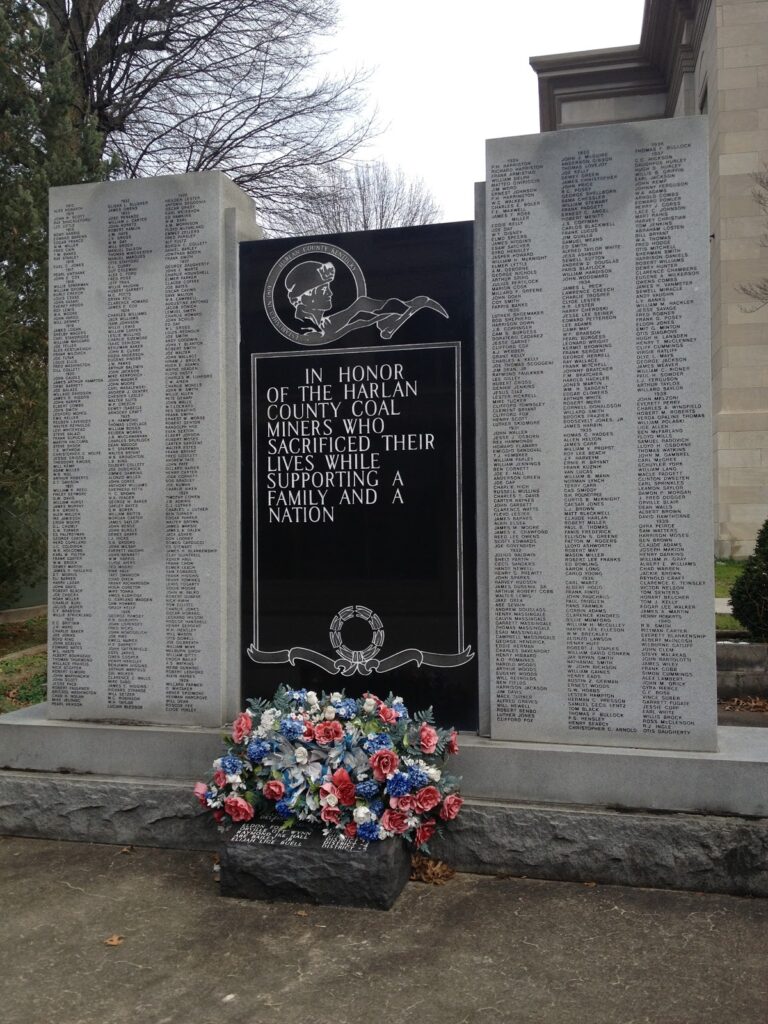 |
| Memorial to the Coal Miner in Harlan, Ky. |
The initial site for the first three courthouses in Harlan located on a mound in the city, which due to this mound was initially called Mount Pleasant. Turns out that this was an Indian burial mound, as further digging an excavation during the building of subsequent buildings onsite revealed bones and other artifacts. When the courthouse was moved to the present site pictured above, the old courthouse remained, and was later used as a meeting hall and Masonic lodge.
Sitting on the courthouse lawn is a monument to those who were killed in coal mines. Coal mining remains an important part of Harlan and its history. Repeated attempts to organize labor and the related conflict between mine owners and their security led to a great deal of violence in the region, and the nickname “Bloody Harlan” being attached to the area. The National Guard was even called in May 5, 1931, in response to violence surrounding a strike.
The courthouse itself was the scene of many heated contests over land suits, mineral rights, settlement cases for disabled miners and widows. In its mining heyday, Harlan was bustling with activity and the courthouse was at the center of it all.

